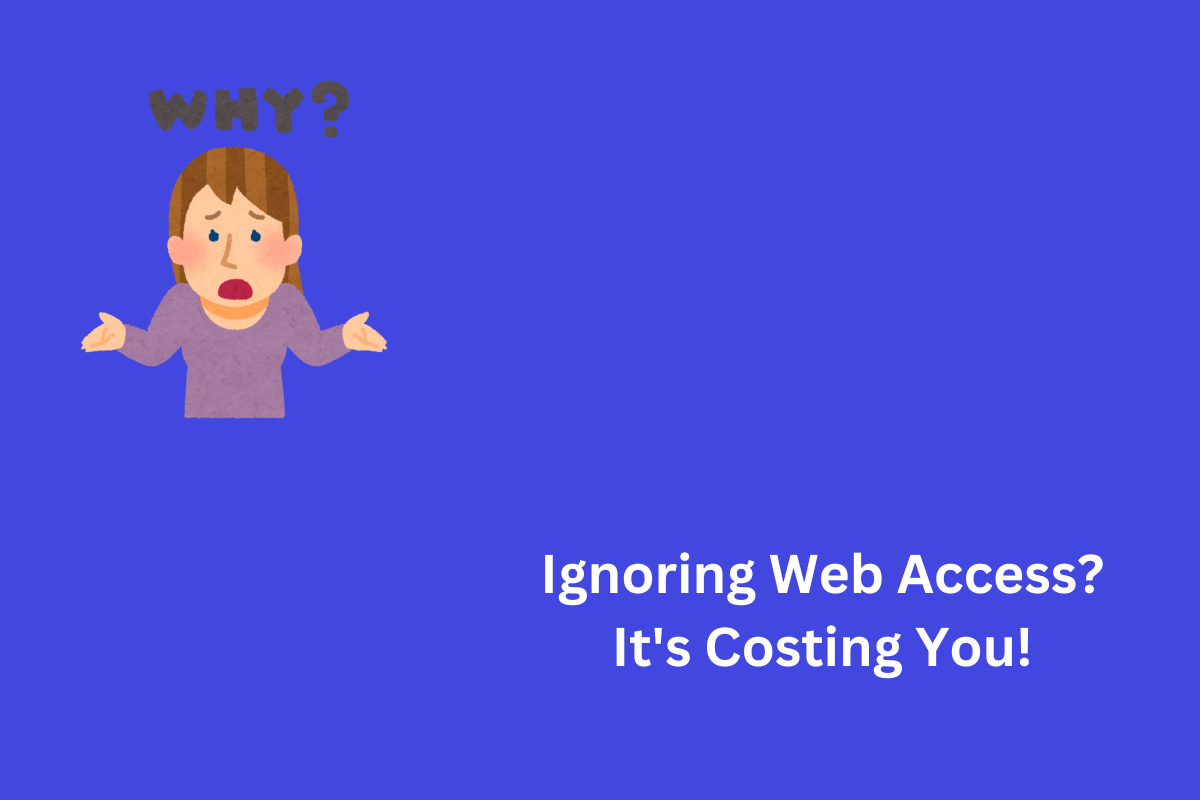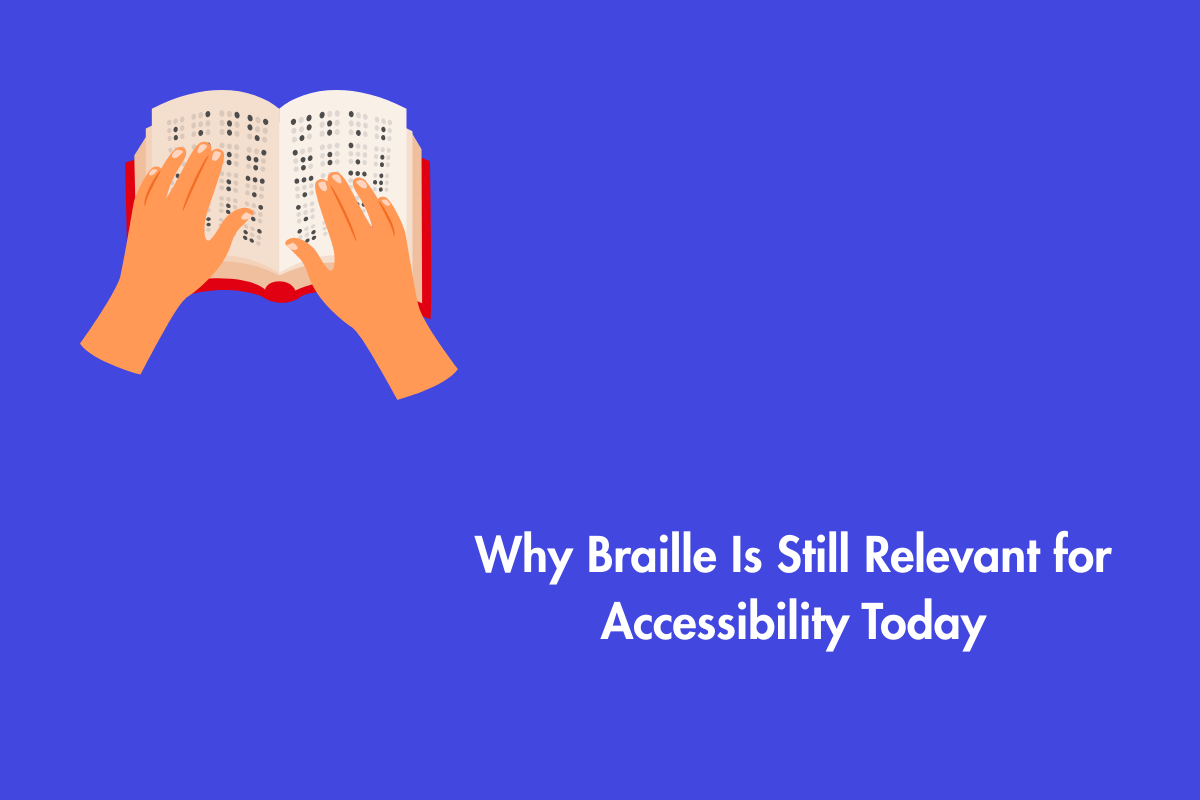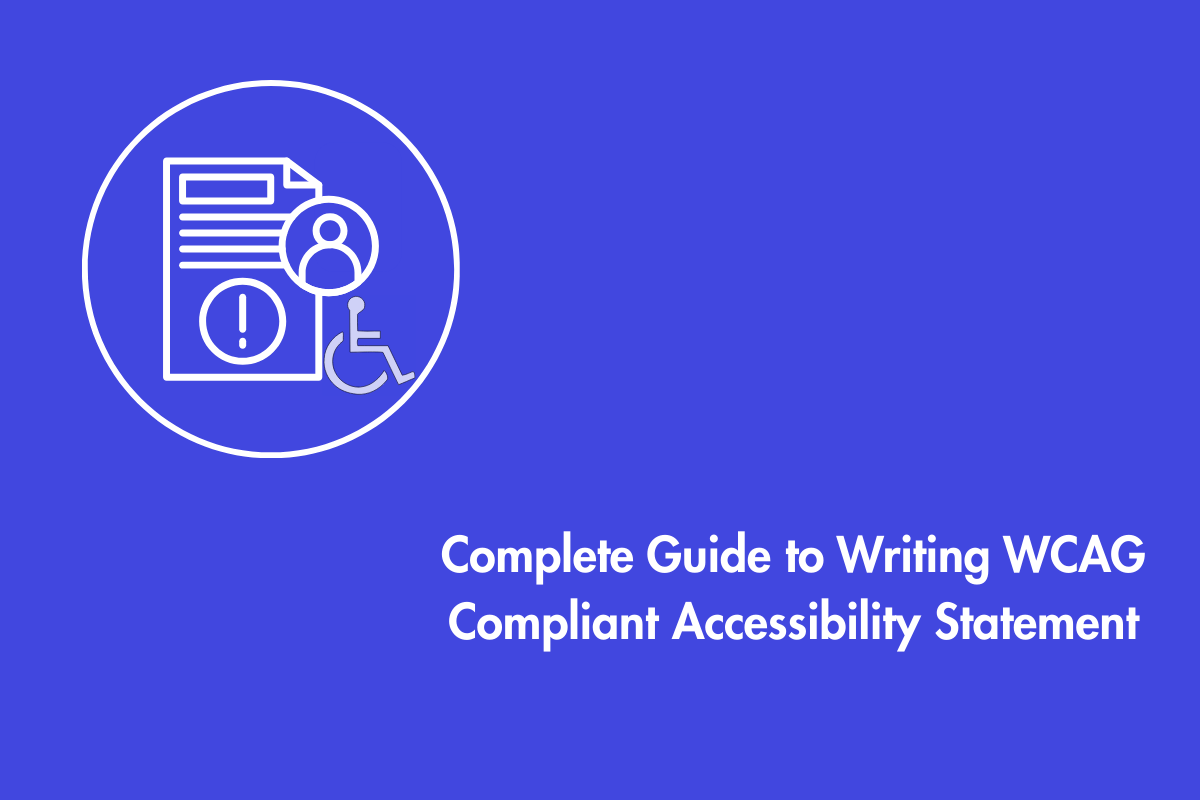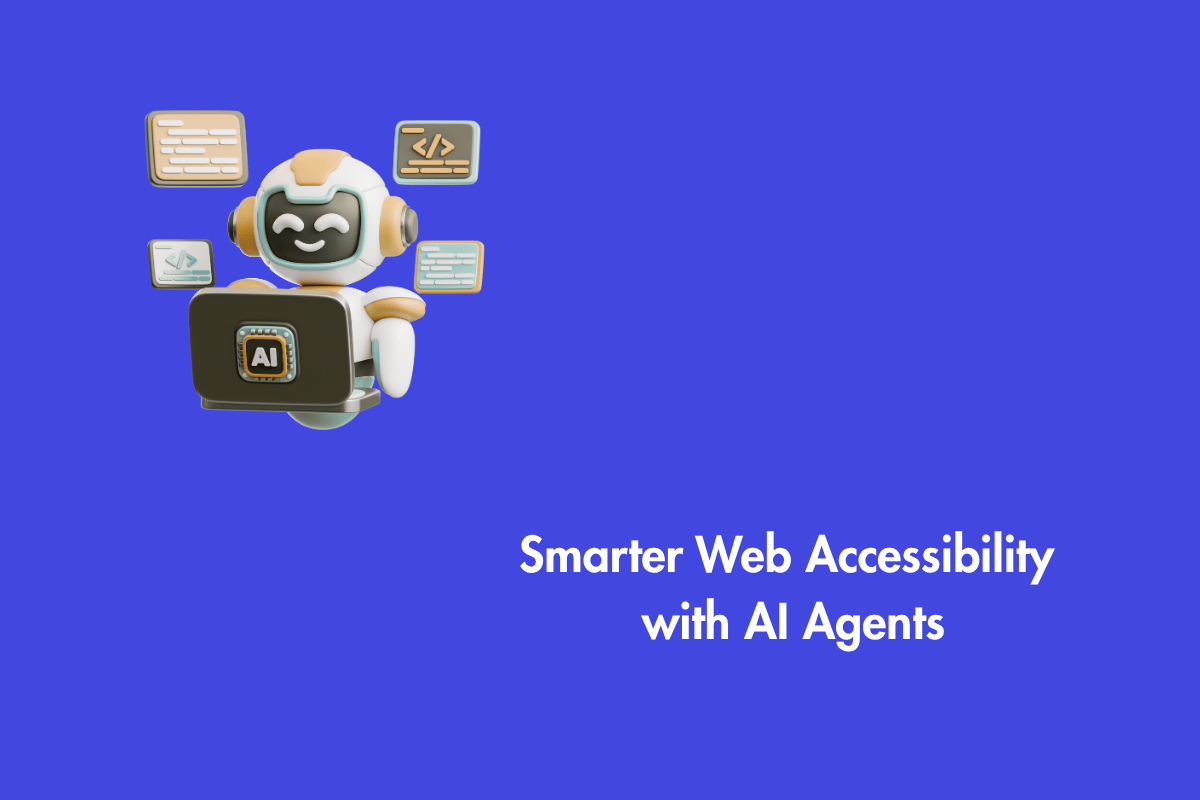Imagine investing thousands, maybe tens of thousands, creating a lovely new store. Bright windows, fascinating exhibits, and an ideal arrangement. But then… You lock the front door and throw away the key for a significant chunk of your potential customers. Sounds absurd, right? Yet, this is exactly what happens when businesses ignore web accessibility.
Web accessibility means designing and building websites and apps so that it is usable by everyone, including people with disabilities such as blindness, deafness, mobility challenges, and cognitive differences.
Common web accessibility issues include auto-playing media and time limits that confuse users with cognitive disabilities, lack of tactile feedback in mobile apps, which hinders screen reader navigation, improperly structured PDFs that screen readers can’t interpret, and CAPTCHAs that block access for users with vision or cognitive impairments.
Ignoring web accessibility is not only an error but also a strategic miscalculation with real consequences. From financial losses to legal risks and reputational damage, the costs can add up quickly. Let us dissect that large bill you might be unknowingly racking up.
Table of Contents
- 1 1. You’re Locking Out a Massive Market
- 2 2. You’re Inviting Expensive Legal Trouble
- 3 3. You’re Damaging Your Brand Reputation (Priceless & Hard to Fix)
- 4 4. You’re Wasting Money on Inefficient Development & Maintenance
- 5 5. You’re Creating Internal Frustration and Inefficiency
- 6 6. You’re Falling Behind Competitors (The Silent Opportunity Cost)
- 7 So, what’s the alternative? The Smart Investment
- 8 The Bottom Line: Accessibility Pays
1. You’re Locking Out a Massive Market
When accessibility is overlooked, it prevents many individuals from using products, services, or spaces, resulting in exclusion, lost business opportunities, and a society that falls short of being truly inclusive and equitable. Furthermore:
- The Numbers Don’t Lie: Globally, over 1.3 billion people live with some form of disability. That’s roughly 16% of the world’s population. In the US alone, it’s over 61 million adults, representing disposable income in the trillions of dollars. Excluding them isn’t just unfair, it’s terrible business.
- The Abandoned Cart Effect: Someone using a screen reader (software that reads text aloud for blind users) wishes to buy your product, but the product images lack descriptions. They can’t understand what they’re buying. Frustrated, they leave. Someone with limited hand mobility struggles to click tiny buttons on your checkout form. They give up. These aren’t hypotheticals; they happen constantly on inaccessible sites.
Accessible checkouts put users first by offering clear form instructions, intuitive navigation, and easy-to-use controls, creating a smoother experience for everyone. When visitors don’t have to struggle with the interface, they’re far more likely to follow through with their purchase. Every inaccessible barrier is a lost sale.
- The Effect of Ripples: People with disabilities don’t live in isolation. They have families, friends, and colleagues who care about inclusivity. If your site excludes someone important to them, they might also choose to take their business elsewhere. Ignoring accessibility can alienate a much wider audience than you anticipate.
The leading reason people switch brands is feeling unappreciated. Prioritizing accessibility alongside security and privacy shows customers they matter, setting your brand apart from the competition in a meaningful way.
2. You’re Inviting Expensive Legal Trouble
In many countries, laws prohibit businesses from discriminating against people with disabilities in “places of public accommodation.” In the U.S. and much of the developed world, this includes websites and mobile apps. If your brand operates internationally, you’re responsible for meeting the digital accessibility requirements in each applicable region.
- Laws Have Teeth: Digital accessibility is a need rather than a recommendation, according to landmark laws such as the Americans with Disabilities Act (ADA) in the US, the Equality Act in the UK, the Accessibility for Ontarians with Disabilities Act (AODA) in Canada, and the European Accessibility Act (EAA). Courts increasingly rule that websites qualify as places of public accommodation.
- The Lawsuit Avalanche: In March 2022, the Department of Justice (DOJ) confirmed through official guidance that web accessibility falls under the Americans with Disabilities Act (ADA) and qualifies as a place of public accommodation. Building on that, in July 2023, the DOJ proposed a new rule aimed at enhancing access to websites and mobile apps for people with disabilities. This proposal also seeks to provide clearer guidance for state and local governments on how to comply with existing ADA obligations.
Web accessibility lawsuits aren’t just increasing; they’re exploding, particularly in the U.S. These legal actions can be incredibly costly, and the risks are real. You could face:
- Hefty Legal Fees: Even defending against a weak or unfounded claim can rack up thousands of dollars in legal fees.
- Settlement Costs: Many companies settle quickly to avoid prolonged litigation and negative publicity, often at a steep price.
- Mandated Remediation: If you lose in court, you may be ordered to make your website accessible and pay the plaintiff’s legal costs, often under tight, expensive timelines.
- Ongoing Monitoring: Courts can require ongoing accessibility audits and third-party monitoring, adding to your expenses.
- Compliance Isn’t Optional: Claims like “we didn’t know” or “it’s too complex” no longer stand up in court. Legal standards are now well-established, and so are expectations.
3. You’re Damaging Your Brand Reputation (Priceless & Hard to Fix)
In today’s hyper-connected, socially conscious world, your reputation is gold. Accessibility strengthens customer relationships and boosts brand reputation. Ignoring accessibility tarnishes your image badly.
- The Social Media Storm: One viral post from a frustrated user explaining how your site excludes them can cause significant damage. Hashtags like #AccessibilityFail spread quickly.
- Perception of Carelessness or Worse: Consumers, especially the younger generation, actively seek out ethical and inclusive brands. An inaccessible site signals you don’t care about a significant portion of society, making it seem outdated, insensitive, or even discriminatory.
- Loss of Trust: Why should potential clients trust you with their business, data, or loyalty if your website isn’t even accessible to everyone? At its core, inaccessibility sends a message that erodes confidence and trust.
- Negative PR: News outlets are covering accessibility lawsuits and failures frequently. Being highlighted as a prime example of “what not to do” makes for terrible publicity.
- Promote Inclusion: Designing a website that’s accessible to all users helps build trust and promote inclusion, demonstrating that you genuinely value your customers’ needs. It also enhances the overall user experience by reducing frustration and enabling smoother, more intuitive interactions for everyone.
4. You’re Wasting Money on Inefficient Development & Maintenance
Ironically, neglecting accessibility initially can end up costing more than addressing it from the beginning.
- The Retrofit Nightmare: Trying to bolt accessibility onto an existing, complex website is like trying to rebuild a car’s engine while it’s driving down the highway. It’s incredibly difficult, time-consuming, and expensive. Developers have to untangle messy code, redesign layouts, and rework core functionality.
- Higher Bug Fix Costs: Inaccessible sites often have underlying structural problems that cause other bugs and inconsistencies. Fixing accessibility often means fixing these deeper issues too, but doing it reactively costs more than preemptive action.
- Slower Updates: Modifying an inaccessible codebase is riskier and time-consuming, as developers must constantly be cautious about disrupting functionality for assistive technology users or creating new obstacles.
- Missed SEO Benefits: Many accessibility best practices (like clear headings, descriptive link text, image descriptions, and proper semantic HTML) directly overlap with SEO best practices. An accessible site is often easier for search engines to understand and rank well. Ignoring accessibility means missing out on free and organic website traffic.
5. You’re Creating Internal Frustration and Inefficiency
The impact of inaccessibility isn’t limited to customers—it affects your internal operations as well.
- Employee Experience Suffers: If your internal tools, HR systems, or training platforms aren’t accessible, you risk excluding skilled employees with disabilities. This leads to frustration, lower productivity, and potential discrimination complaints within your organization.
- Support Costs Rise: When users encounter accessibility barriers, they often turn to customer support for help completing basic tasks. This influx of support requests drives up operational costs and strains your service teams.
- Innovation Slows Down: Constantly addressing accessibility issues or legal risks diverts your team’s focus from forward-thinking projects. Instead of driving growth, they’re stuck putting out fires, limiting your organization’s ability to innovate.
6. You’re Falling Behind Competitors (The Silent Opportunity Cost)
While you’re ignoring accessibility, your competitors are embracing it.
- Capturing the Market: Savvy businesses see the massive, underserved market of people with disabilities and their allies. They build accessible experiences and win their loyalty and business.
- Better Usability for Everyone: Accessibility features often benefit all users. Captions assist individuals in noisy settings or those learning a new language. Clear navigation enables everyone to locate information more quickly. Keyboard shortcuts accelerate tasks. In most cases, a more accessible site is also a more user-friendly site for all.
- Future-Proofing: As populations age, the number of people experiencing age-related impairments (vision, hearing, dexterity) grows rapidly. An accessible site positions you perfectly for this demographic shift. Regulations will also only get stricter globally.
So, what’s the alternative? The Smart Investment
The consequences of neglecting accessibility are undeniable: lost revenue, legal expenses, reputational harm, increased development costs, and missed business opportunities. But choosing accessibility isn’t just about avoiding these risks; it’s a strategic, ethical, and financially sound investment in your organization’s future. Making your digital platforms accessible doesn’t have to be overwhelming. Here are some practical steps to get started:
- Conduct an Accessibility Audit: Regularly evaluate your website and apps against standards like WCAG 2.1 to identify gaps and prioritize improvements.
- Build Accessibility In from the Beginning: Whether launching a new website or product, incorporate accessibility into every phase of your design and development process (the “shift left” approach). It’s more efficient and cost-effective than fixing issues later.
- Listen to the Community: Engage with people with disabilities and advocacy groups to gain firsthand insight. Their feedback can reveal meaningful ways to enhance your accessibility efforts.
- Train Your Team: Make sure everyone, from designers and developers to content creators and marketers, understands accessibility principles. When all teams are aligned, accessible design becomes a shared responsibility.
The Bottom Line: Accessibility Pays
Stop thinking of web accessibility as charity or a legal burden. See it for what it truly is: a fundamental requirement for ethical practices and a successful business in the digital age. It opens your doors to millions of customers, protects you from hefty lawsuits, builds a stronger positive brand, makes your development efficient, improves usability for everyone, and positions you as a thoughtful leader.
The cost of ignoring accessibility is steep and multifaceted. The cost of embracing it? That’s an investment with an impressive and undeniable return. Don’t leave money on the table and goodwill at the door. Create with inclusivity from the beginning, and your profits, your customers, and your integrity will all benefit.



